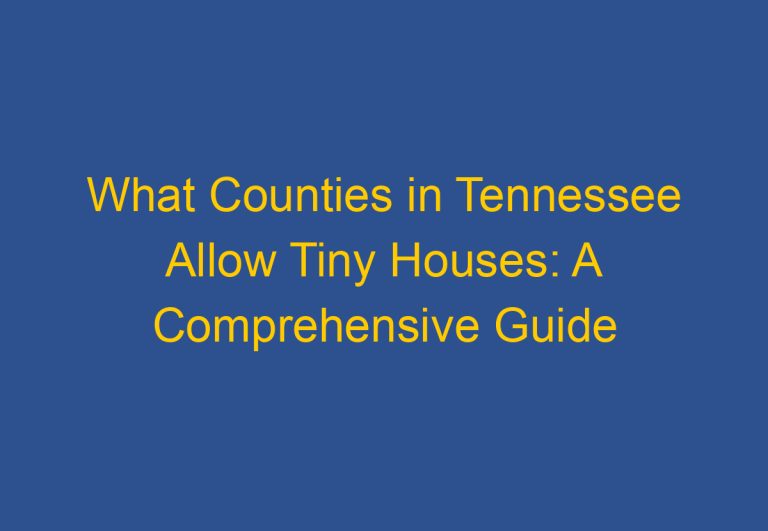Tiny Homes for Homeless California: A Viable Solution to Housing Crisis
California faces a significant homelessness crisis, affecting thousands of individuals and families. Tiny homes offer a practical solution, providing an affordable and efficient way to house those in need. These small, modular units provide shelter and can help break the cycle of living on the streets.
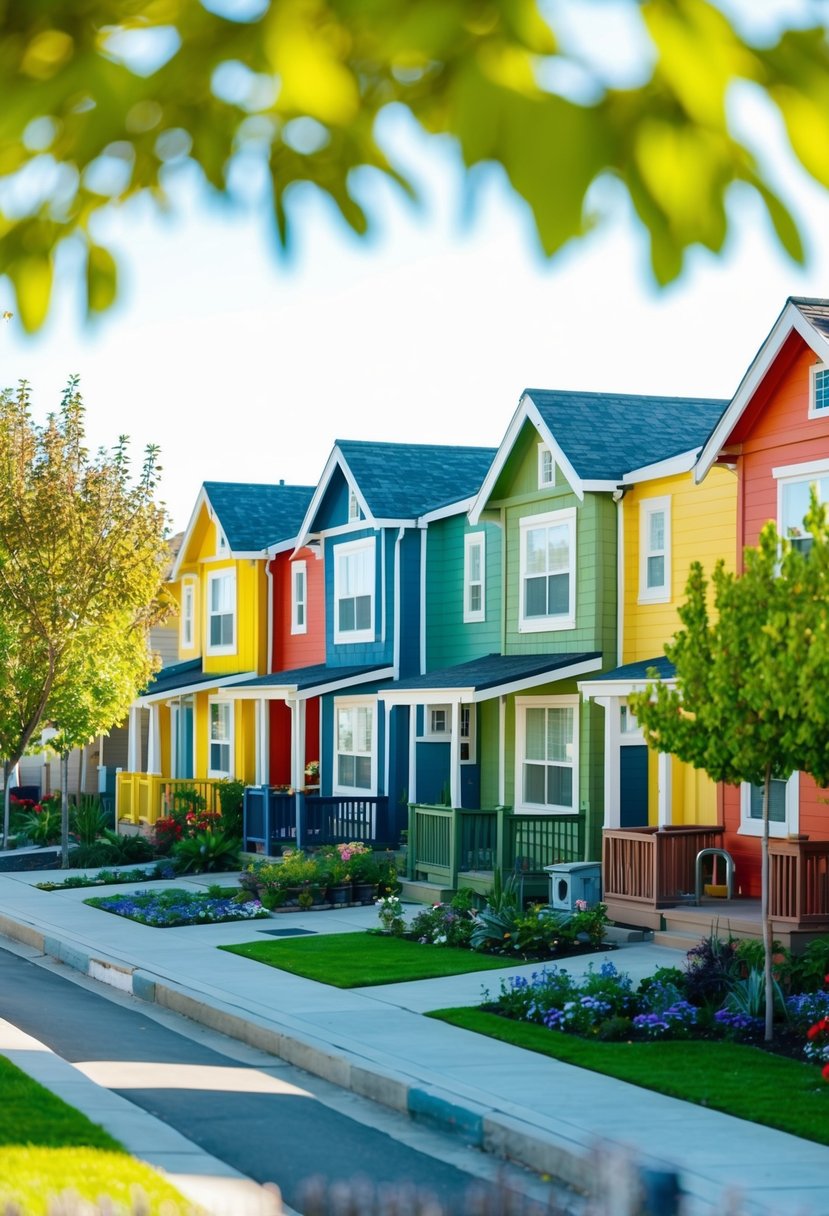
Cities across California have started creating tiny home villages to address this urgent issue. These homes, often 70 to 120 square feet, are designed for quick assembly and offer basic living conditions. They serve as a temporary transition for many from homelessness to stable housing, giving residents a sense of dignity and community.
As more tiny home projects are underway, the impact they make cannot be overlooked. With support from local organizations and government initiatives, tiny homes may be a key factor in reducing homelessness throughout the state. The ongoing investment in such innovative housing solutions shows promise for a better future for those affected.
Exploring the Homelessness Crisis in California
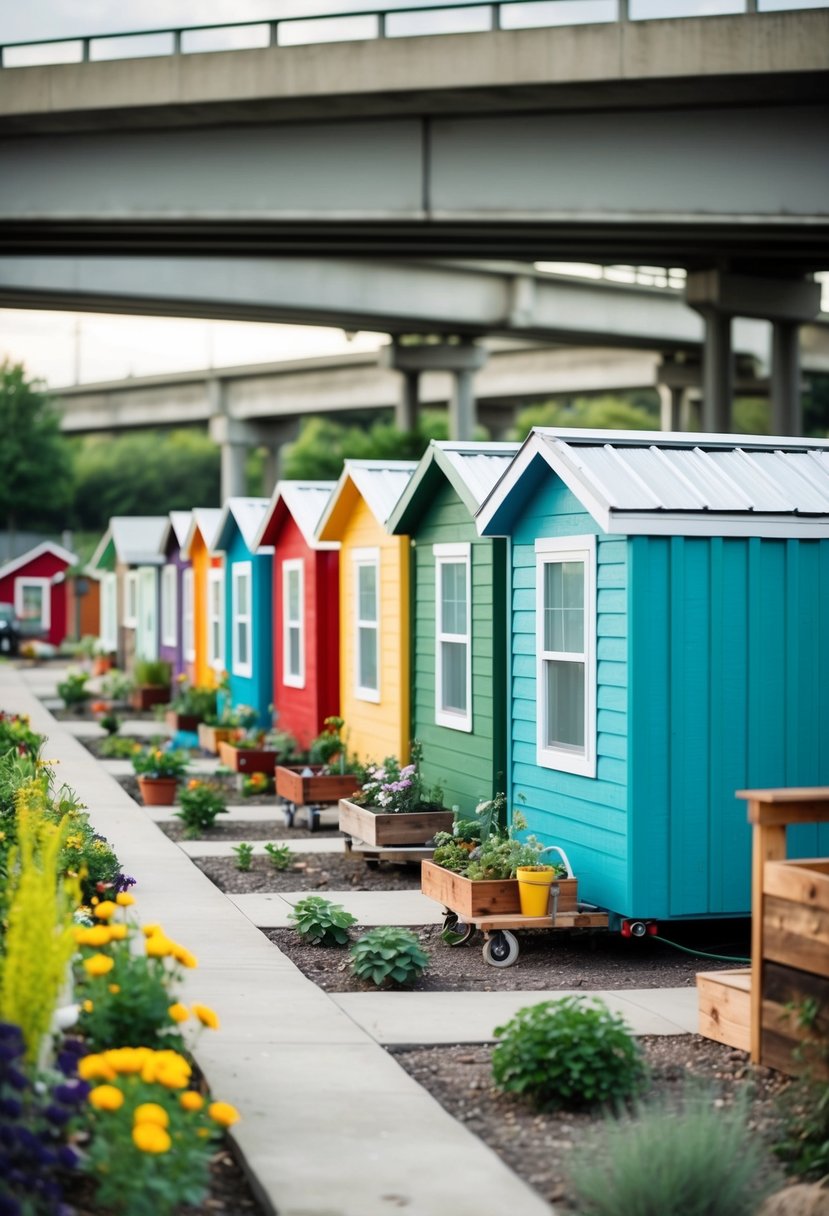
California faces a significant homelessness crisis, with many people living on the streets and in encampments. Major cities struggle to provide enough shelters, leading to a rise in temporary housing solutions, such as tiny homes.
Scope of Homelessness in Major Cities
In California, homelessness is not just a statistic; it affects real people. Major cities like Los Angeles, San Diego, San Jose, and Sacramento are at the center of this issue. The state is short approximately 110,000 shelter beds compared to the unhoused population.
In Los Angeles, it’s estimated that over 66,000 people experience homelessness. This number is significant, considering the city’s resources and efforts to combat this issue. San Diego has faced similar challenges, with over 8,500 people classified as homeless.
Sacramento and San Jose are also experiencing a surge in unhoused individuals, making it difficult to find adequate housing solutions. The pressure on these cities has prompted state officials to seek new approaches, including funding for tiny homes as a faster way to provide shelter.
The Rise of Homeless Encampments
With limited shelter options, many unhoused people have turned to encampments. These camps can be seen in various locations throughout California, often in public spaces.
Encampments are areas where groups of homeless individuals set up temporary living situations. Unfortunately, these locations can lead to sanitation and safety issues. Reports show that encampments are increasing in Los Angeles and San Diego, causing growing concerns among local communities.
The rise in encampments highlights the struggle faced by individuals seeking stable housing. While temporary solutions are being implemented, the need for permanent affordable housing remains critical. As initiatives, like tiny homes, are explored, the impact on these encampments will be closely monitored.
Tiny Homes as a Solution

Tiny homes offer a creative approach to addressing homelessness in California. By providing safe, compact living spaces, these units serve as both interim and potential permanent housing for those in need.
Understanding Tiny Home Villages
Tiny home villages consist of several small homes grouped together, often with shared services and community spaces. Each unit typically ranges from 70 to 120 square feet. They provide essential shelter without the complexity and costs of traditional housing.
Many villages include basic amenities like restrooms and showers. This setup helps foster a sense of community among residents. Organizations like Ameg and Irontown Modular have played significant roles in developing these communities. They focus on creating functional, supportive environments for people transitioning out of homelessness.
Success Stories from California Cities
Cities like Los Angeles have implemented tiny home villages, successfully housing hundreds of homeless individuals. For instance, North Hollywood opened one of its first villages, significantly reducing the number of people living in encampments.
Reports show that these homes work better than traditional shelters in leading residents to permanent housing. The success rates often range from 84% to 98% for those transitioning to stable living situations. This effective model highlights the potential of tiny homes to provide lasting solutions to homelessness.
Infrastructure and Maintenance of Tiny Homes
Successful tiny home villages require a solid infrastructure to maintain long-term viability. This includes ensuring access to utilities, waste disposal, and social services. Regular maintenance is crucial for keeping homes livable and safe.
Community support plays a vital role in this process. Many tiny home villages engage volunteers and local organizations to help with upkeep and to provide additional services like job training and health care. These efforts create a sustainable environment that supports residents on their path to stability.
Legal and Political Framework

California’s approach to tiny homes for the homeless reflects a complex interaction between local governments and state policies. Various initiatives aim to address homelessness, while also navigating legal hurdles tied to housing regulations and community concerns.
Local Governments’ Role
Local governments in California play a crucial role in regulating tiny homes. Each city has its own rules about where these homes can be placed, which can affect their effectiveness in combating homelessness. For example, Los Angeles and San Francisco have taken steps to create designated areas for tiny home communities.
Cities like Oakland are adapting existing zoning laws to accommodate these structures. This includes relaxing restrictions on land use. Local officials must balance the need for quick solutions to homelessness with the concerns of residents regarding property values and neighborhood aesthetics.
State-Level Initiatives and Policies
At the state level, initiatives led by figures like Governor Gavin Newsom focus on addressing the homelessness crisis. Newsom has pushed for policies that allow tiny homes to bypass some standard building codes. This aims to expedite construction and reduce costs.
In 2020, Newsom announced $30 million in funding specifically for tiny home projects. This funding supports various cities and nonprofits working on solutions. However, challenges remain, like ensuring adequate resources and infrastructure to support these communities.
Legislation from state lawmakers and projects initiated by mayors, like Eric Garcetti in Los Angeles, further aim to streamline the development of tiny homes. These efforts reflect a growing recognition of the need for innovative solutions to homeless problems in California.
Integrating Supportive Services
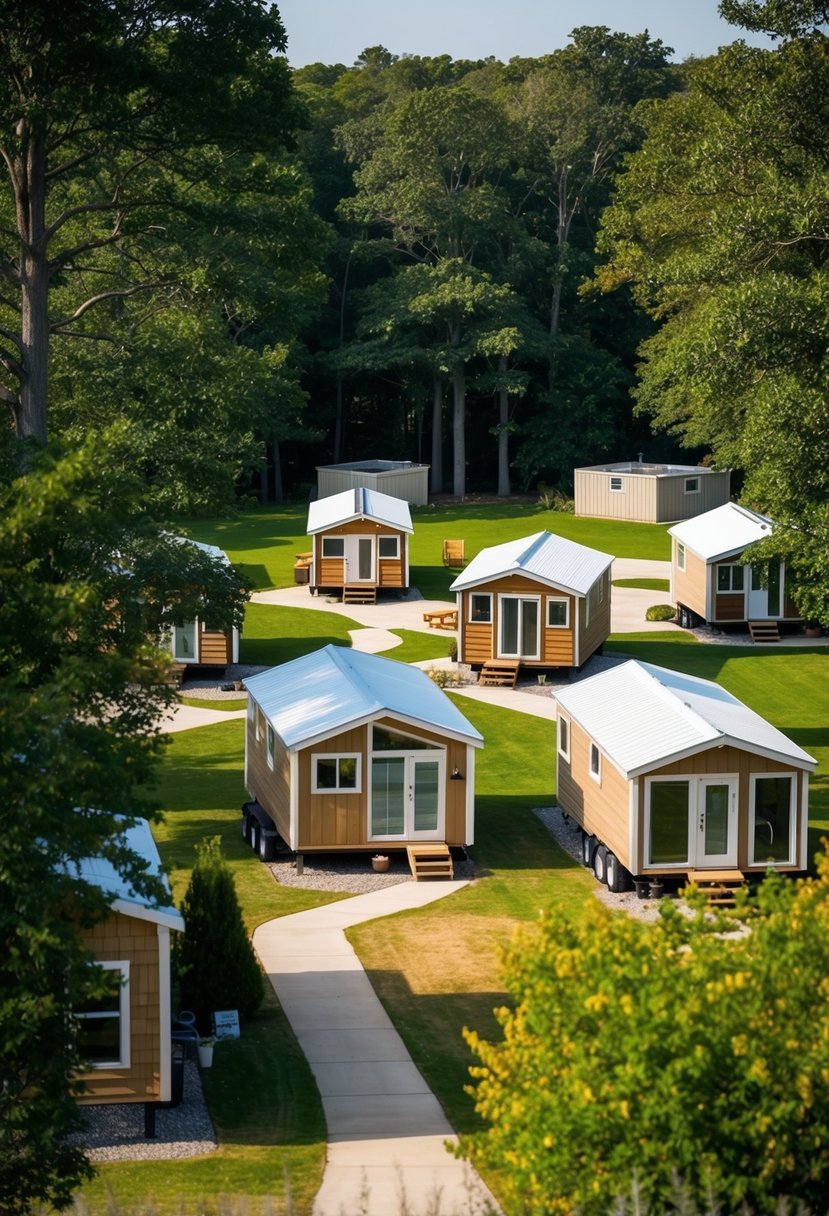
To effectively support individuals living in tiny homes, it is crucial to integrate various supportive services. These services must address social well-being, healthcare needs, and job training opportunities. Each category plays a vital role in helping residents transition to stability.
Social Services Integration with Housing
Social services are essential in creating a supportive environment for tiny home residents. Case management helps connect individuals with resources like food assistance and legal aid. Coordinators work closely with residents to assess their needs and develop personalized plans.
Access to mental health services is also vital. Many residents may face challenges such as past trauma or ongoing mental health issues. Providing counseling and support groups can foster a sense of community and safety.
Additionally, promoting social activities encourages interaction among residents. These efforts help reduce feelings of isolation and encourage cooperation within the community.
Healthcare and Substance Abuse Counseling
Healthcare services play a significant role in maintaining the well-being of tiny home residents. On-site clinics or partnerships with local providers can facilitate regular health check-ups and preventive care.
Substance abuse counseling is another critical service. Many individuals facing homelessness may struggle with addiction. Easy access to treatment programs can promote recovery and improve overall community health.
Combining healthcare with mental health services allows for a holistic approach. For example, providing therapy and support for those struggling with both mental health and substance use can yield better outcomes.
Job Training and Long-Term Stability
Job training programs can empower tiny home residents to build a sustainable future. These programs should focus on skills relevant to local employment opportunities. Partnerships with local businesses can provide internships or job placements.
Encouraging financial literacy is also crucial. Workshops on budgeting and financial planning help individuals manage their resources.
By focusing on these educational opportunities, residents are more likely to achieve stability. It creates a pathway from temporary housing to independent living. Integrating job training within the community could lead not only to personal growth but also to safer, stronger neighborhoods.
Challenges and Controversies
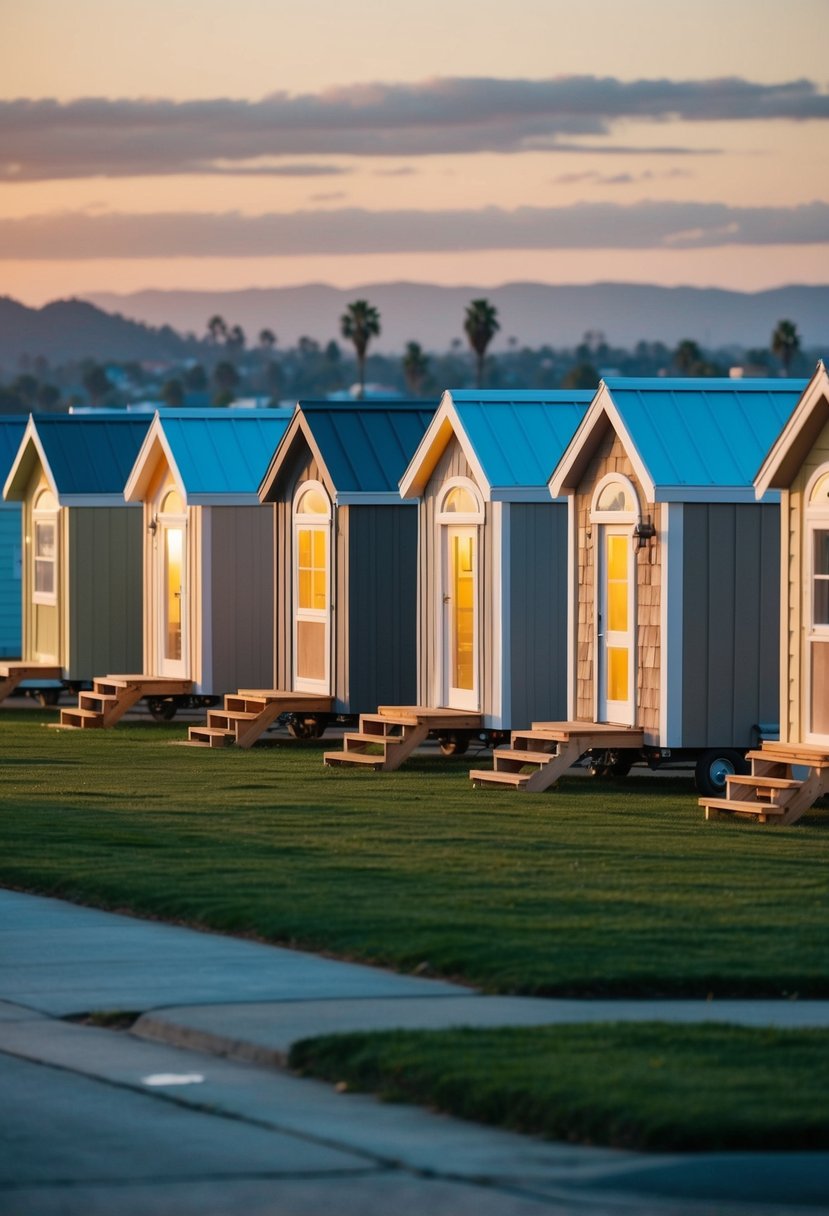
Tiny homes for homeless residents in California face various challenges and controversies. These issues affect public perception, safety, and funding, making the idea of tiny homes a topic of significant debate.
Public Perception and NIMBYism
One of the major challenges is public perception. Many communities have concerns about tiny homes being built in their neighborhoods. This reaction is often referred to as NIMBYism (Not In My Back Yard). Residents may worry about property values, safety, and potential changes to community dynamics.
Some community members argue that tiny home sites could attract crime or unwanted behavior. These fears can lead to strong opposition during city meetings when new developments are proposed. Supporters argue that tiny homes provide essential services for homeless residents seeking stable housing. Finding common ground remains difficult as misconceptions about homelessness persist.
Safety and Security Concerns
Safety and security are also important aspects of the tiny home movement. Many people worry about the living conditions of tiny homes, particularly regarding health and safety standards. The state requires these units to meet certain specifications, including a minimum size of 70 square feet for single occupants.
Despite these regulations, some facilities still have concerns. Residents may face risks such as inadequate security, leading to fears of vandalism or substance abuse. Ensuring safe environments for homeless people requires ongoing management and community engagement.
Addressing these concerns effectively is crucial for the success of tiny home initiatives.
Funding and Economic Viability
Funding for tiny homes presents another significant challenge. Many projects rely on government grants and nonprofit support. State contracts have been awarded to companies like Pallet Shelter to provide temporary housing. However, the financial sustainability of such projects is in question.
Costs can quickly add up, from construction to ongoing maintenance. Current funding models may not cover all necessary expenses. Some argue that charging rent for tiny homes, even at reduced rates, could help cover costs. Others oppose this approach, believing that homeless residents should not be required to pay.
Balancing financial viability with ethical considerations is a complex issue that affects the future of tiny homes in California.
The Future of Tiny Homes for the Homeless
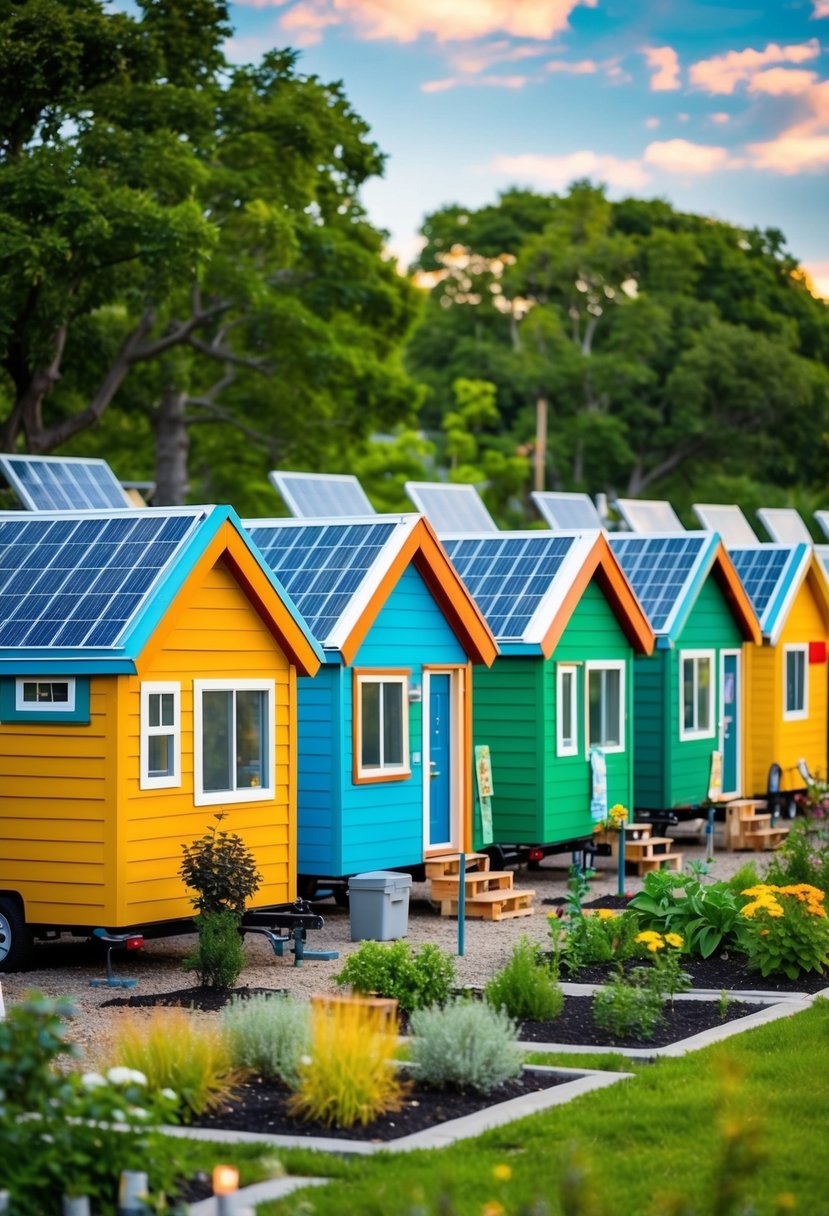
Tiny homes are poised to play a significant role in addressing the homelessness crisis in California. This section discusses innovative designs and features, future expansion plans, and ways to measure the success of tiny home initiatives.
Innovative Designs and Features
Tiny homes are being designed with practicality and comfort in mind. Many units include en suite bathrooms, providing residents with vital privacy and sanitation. Companies like Pallet Shelter focus on modular designs that are easy to assemble, allowing for rapid deployment in various locations.
These homes typically range from 70 to 120 square feet, effectively using space to meet basic living needs. Community features, like shared cooking and gathering areas, aim to foster a sense of belonging among residents.
Additionally, designs often incorporate sustainable materials and energy-efficient systems. This commitment to environmental mindfulness can enhance the living experience for those transitioning from homelessness.
Expansion Plans and Potential
California’s government is moving forward with ambitious plans for tiny home villages. In cities such as San Francisco, Sacramento, San Jose, and Los Angeles, many units are set to address the significant housing shortage.
The state plans to construct hundreds of tiny homes, prioritizing locations where encampments currently exist. Organizations like Hope of the Valley are key partners in these efforts. By collaborating, they ensure the homes reach the people who need them most.
The expansion allows for continued support systems like housing navigation programs, assisting residents in transitioning to permanent housing. By addressing immediate needs while planning for the long term, these initiatives show real potential.
Measuring Success and Impact
Evaluating the effectiveness of tiny home projects is crucial. Success can be measured in various ways, including improved living conditions and rates of transition to permanent housing.
Tracking mental and emotional well-being is also important, as many residents face challenges related to a mental health crisis. Establishing metrics for these aspects helps assess the effectiveness of tiny homes as long-term solutions.
Regular feedback from residents can guide improvements in village design and support services. Combining quantitative data with personal stories can provide a clear picture of the impact tiny homes have on the lives of those experiencing homelessness.





